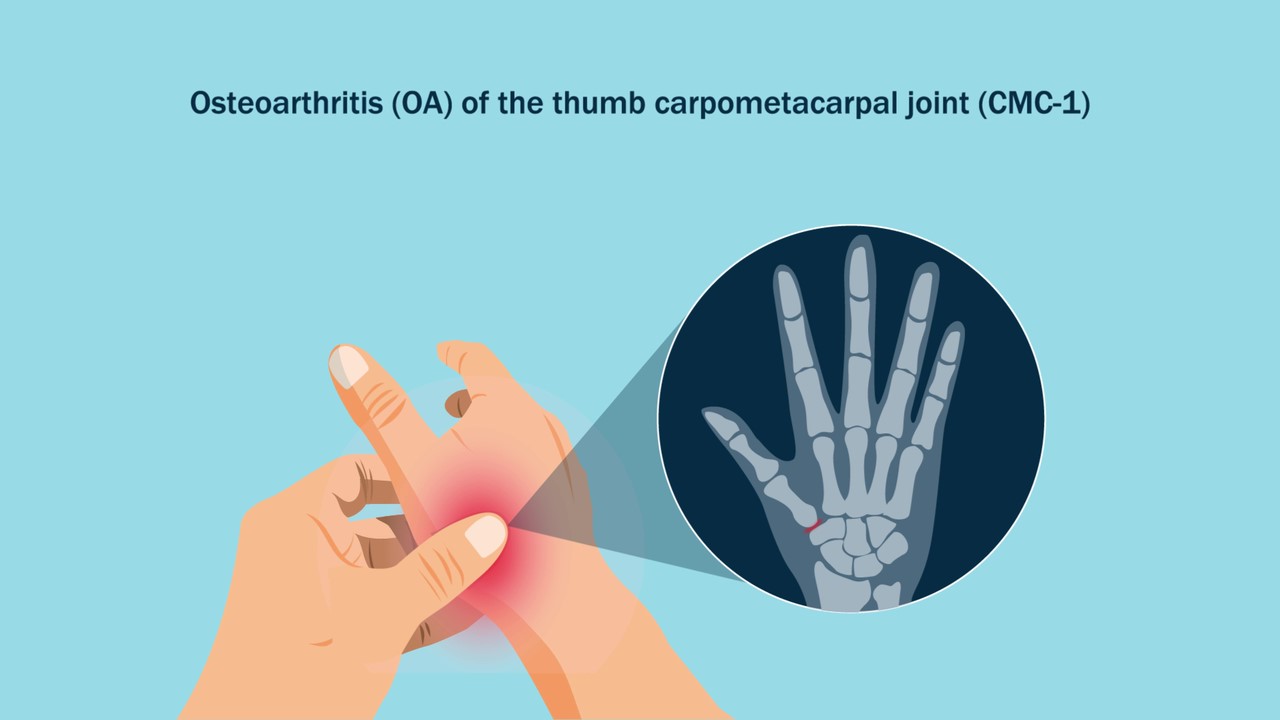JBJS Editor-in-Chief Dr. Marc Swiontkowski shares this post on a new study in JBJS on outcomes of nonsurgical treatment of thumb carpometacarpal osteoarthritis at >5 years of follow-up.
It is a time-tested strategy in orthopaedic surgery to manage arthritic conditions nonoperatively until patient function or quality of life is impacted to the point at which more invasive interventions should be discussed. The more recent practice of shared decision-making—including discussions with the patient and family of indications, risks, and benefits of all options and agreement on next steps—has also now become standard.
One question that may reasonably arise: for how long is nonsurgical treatment effective? For those with basilar thumb arthritis, a new report by Esteban Lopez et al. provides helpful data. The study, which is in the December 6, 2023 issue of JBJS, can be accessed now at JBJS.org:
Long-Term Outcomes of Nonsurgical Treatment of Thumb Carpometacarpal Osteoarthritis: A Cohort Study
As the investigators note, osteoarthritis of the thumb carpometacarpal joint often results in pain and limitations in activities of daily living (ADL) and can impact quality of life. While the short-term effectiveness of exercise therapy combined with orthosis use has been demonstrated previously, the authors sought to examine its effectiveness over a follow-up period of >5 years. Patients in the study received hand therapy at 8 specialized hand clinics in The Netherlands between 2011 and 2015. Two overlapping samples were used in the study. In the first sample (n = 170), patients were evaluated for pain and limitations in ADL without surgery. In the second sample (n = 217), conversion to surgery was evaluated.
At a median follow-up of 6.6 years, the Michigan Hand Outcomes Questionnaire (MHQ) pain score did not differ significantly from that at 12 months. The MHQ ADL score improved by 4.4 points compared with 12 months, which was significant although not clinically relevant.
Of 163 patients completing the satisfaction questionnaire at >5 years, 5% percent rated their satisfaction as “poor,” 14% as “moderate,” 26% as “fair,” 39% as “good,” and 16% as “excellent.” In addition, 71% of the participants were willing to undergo the treatment again under similar circumstances.
At a median follow-up of 7 years (range, 5.5 to 9.0 years), only 22% of the patients had converted to surgery.
Overall, the findings suggest that nonoperative care with bracing and exercises is an effective and well-tolerated treatment strategy for a majority of patients. The study lends further support to nonsurgical care as the initial management approach for basilar thumb arthritis, with sustainable treatment effects demonstrated in this investigation.
A video abstract is available with the full study at JBJS.org: Long-Term Outcomes of Nonsurgical Treatment of Thumb Carpometacarpal Osteoarthritis: A Cohort Study
JBJS Editor-in-Chief
Press release: Nonsurgical treatment of thumb arthritis shows lasting benefits





How many were workers comp versus regular folk?
My experience in evaluating work comp is that they all seem to progress to surgery, with a lot of poor outcomes
I realize I am seeing a skewed sample, but still, very few were happy long term with the results of conservative treatment
Sds